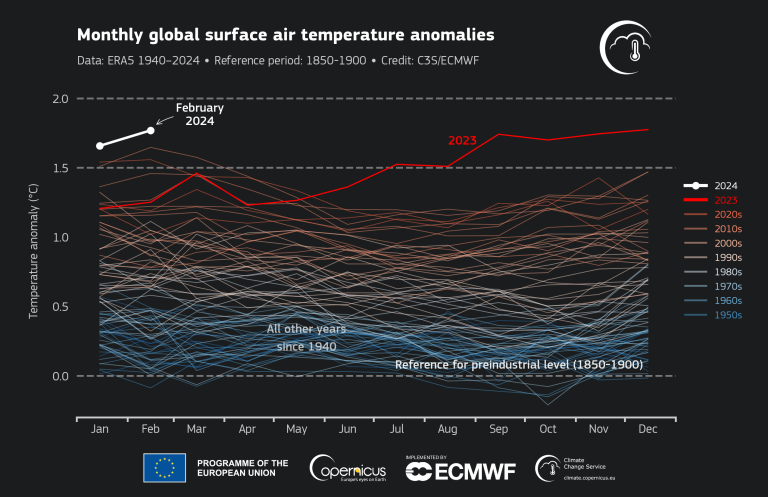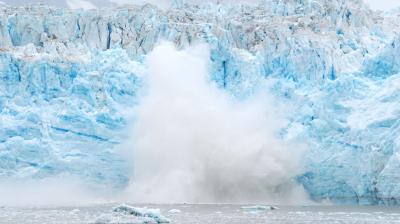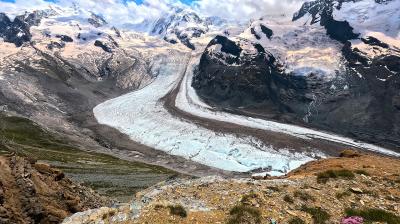World had warmest February on record

WMO’s State of the Global Climate 2023 report, to be released 19 March, will provide full details of leading climate change indicators and impacts last year.
The month as a whole was 1.77°C warmer than the estimated February average for 1850-1900, the pre-industrial reference period, according to Copernicus Climate Change Service, implemented by the European Centre for Medium-Range Weather Forecasts.
It said that the average global sea surface temperature over 60°S–60°N was 21.06°C in February, the highest for any month in its ERA5 dataset, and above the previous record of August 2023 (20.98°C).

The average daily sea surface temperature reached a new absolute high of 21.09°C at the end of February, according to the ERA5 dataset. Sea surface temperature is defined over the global extrapolar ocean, from 60°S to 60°N and is used as a standard diagnostic for climate monitoring.
El Niño continued to weaken in the equatorial Pacific, but marine air temperatures in general remained at an unusually high level.
February temperatures were above average across most of the Arctic, the Americas, Africa, Europe, and Australia whereas much of Greenland, eastern Asia, and parts of Antarctica were cooler than average. North America, South America, and Europe had their warmest February on record while Africa was second warmest, said a separate report from the US National Oceanic and Atmospheric Administration (NOAA).
Global sea ice extent was the fourth smallest in the 46-year record. Arctic sea ice extent was slightly below average, whereas Antarctic sea ice extent was much below average (by 370,000 square miles/958,295 square kilometers), ranking second-smallest on record, according to NOAA.
WMO’s State of the Global Climate report uses six international datasets, including ERA5 and NOAA’s National Centers for Environmental Information.










